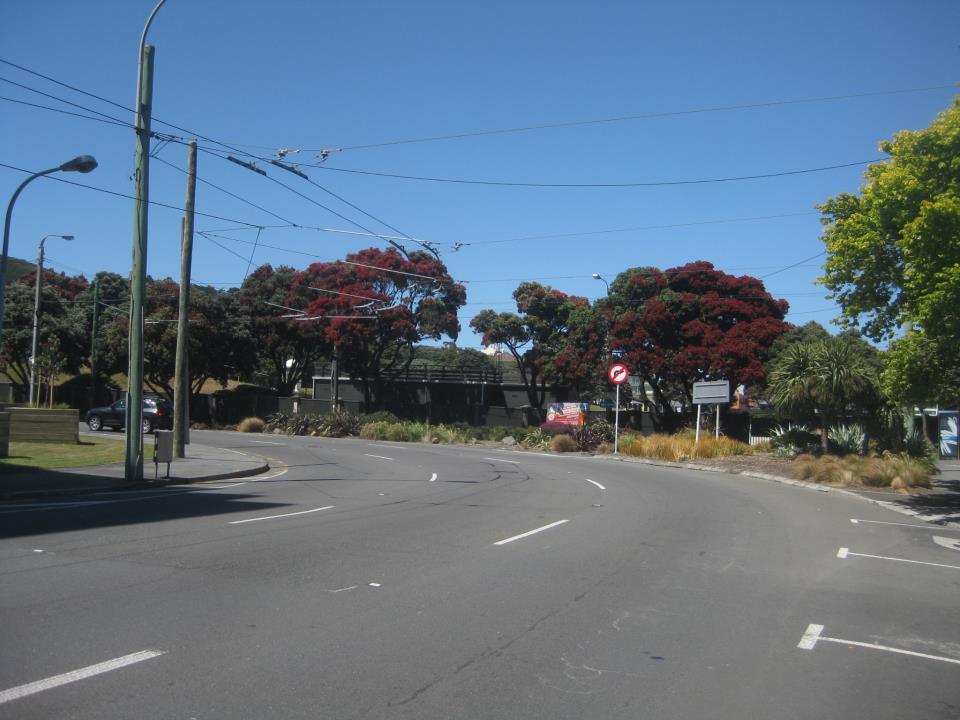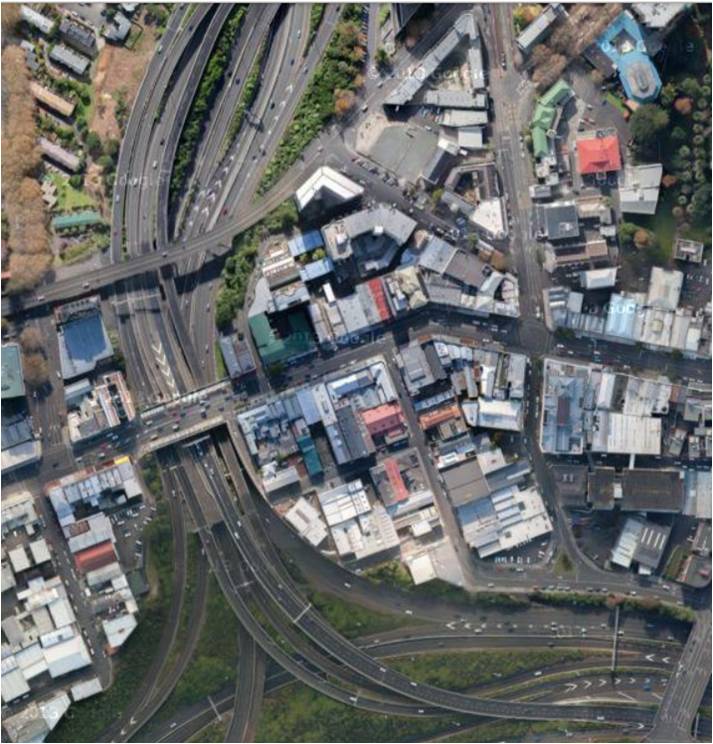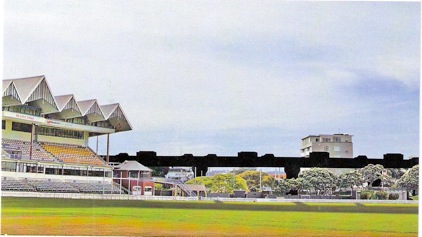Note: For formal purposes , the flyover proposal is called the “Basin Bridge Proposal”.
This guide has been developed by the Save the Basin campaign to assist people in making a written submission to the Board of Inquiry that has been established by the Environmental Protection Authority (EPA) to hear the NZTA’s resource consent application for a ‘Basin Bridge’. The Guide is divided into Part One – the process of making a submission – and Part Two, which gives you some pointers on what you might want to cover in your submission.
The Guide is below, but you can also download it as a PDF file:
Submission Guide: Proposed Basin Bridge (Flyover) (PDF, 184 KB)
STOP PRESS
Three things we’ve recently learned that aren’t in the Submission Guide, and one further suggestion:
1) You don’t need to be 18 or over to submit – there is no minimum age limit. So school-age children can submit – and they should, especially if they live or study in the vicinity of the proposed flyover.
2) You don’t have to be living in New Zealand to submit.
3) The EPA has released its draft schedule for the Board of Inquiry process – and it shows the hearings starting on Monday 13 January, when many people are still on holiday. If you feel this is unfairly early, tell the EPA so in your submission, and urge them to start the hearings later. The draft schedule is on p24 of this EPA Inquiry Procedures document.
4) In the online submission form, when you ask to appear, you are given the option of going in with other submitters making similar points. We suggest that you ask to appear separately.
PART ONE – THE PROCESS
Here are the main points about the submissions process:
- The deadline for submissions is 5pm on Friday 6 September 2013.
- Submissions can be made online, by email, by fax, by post or by delivering in person. Details of these options are contained in the Information Sheet.
- Whichever method you use, if your submission is in electronic form, please send a copy to Save the Basin: stoptheflyover@gmail.com
- The subject line of your submission email is required to read “Submission [your name], Basin Bridge Proposal”
- In your submission, you are required to:
– give your full name and contact details
– say whether you are a trade competitor of the applicant (NZTA) – presumably you aren’t!
– state which parts of the application your submission relates to
– state your position on the proposal
– say what decision you would like the Board to make
– say whether or not you would like to speak at the Board hearing
- If your submission does not meet these requirements, it should not be rejected. The EPA should contact you to clarify these points. However, best to get it right first time.
- You are allowed to send additions to your submission, or a replacement submission, up until the closing date for submissions
Note: All details can be found on the Environmental Protection Authority’s Information for Submitters):
Save the Basin is encouraging submitters to:
- Say you are completely opposed to the proposed flyover
- Cover the reasons you are opposed to the flyover, and all the topic areas you wish to bring to the Board’s attention, in your written submission – if you don’t mention a topic in this submission, you can’t introduce it in your subsequent written or oral evidence
- Your submission doesn’t have to be complicated. It can simply state how you will be affected by the proposed flyover, and what your personal reasons are for opposing it.
- Ask to speak at the hearing, and say that you want to present your submission as an individual. (It’s OK if you find out later you can’t appear and it’s also possible for you to arrange someone else to appear on your behalf). If you do ask to appear in person, you can prepare additional evidence – but it can only expand on the areas you discussed in your original submission, not cover new areas.
- We have been told that people who don’t initially say they want to speak at the hearing can subsequently change their mind and ask to appear, up to the start of the Board hearing. Our advice is: don’t rely on this: say in your initial submission that you want to appear.
Why are we asking submitters to say they want to appear in front of a Board of Inquiry?
- A Board of Inquiry with only a few submitters appearing will be a fast Board of Inquiry. We believe the Board of Inquiry should consider the proposed Basin flyover at the length and with the seriousness it deserves.
- Appearing in front of the Board gives you more time to prepare your detailed evidence – to elaborate on the topics you made in your original submission. If you don’t raise a topic in your initial submission, then you can’t address it later in written and/or oral evidence you present to the Board.
- This Board of Inquiry is, when it comes right down to it, a political rather than a legal process. It’s your chance to be part of a broad community movement that tells the politicians that opposition to the proposed flyover is widespread, dedicated and determined.
How scary is it to appear before a Board of Inquiry?
Not very scary! You’re not on trial – NZTA’s proposal is. The Board is a lot less formal than a court room. You don’t have to do it alone. You can bring a support person. Save the Basin will endeavour to have someone at the hearing at all times.
If you find later that you aren’t available or can’t face the Board you can always pull out, or get someone else to appear on your behalf (see below).
Other points about appearing before the Board
- At the time of writing, there remains a risk that the Board will decide to hold the hearing over December and January, when large numbers of people would be unavailable to appear. In your submission, please ask the Board not to start meeting until the final week of January at the earliest, and point out the unfairness of a hearing that starts in December or early January.
- You can ask to appear in your initial submission, and then subsequently arrange for someone else to present evidence on your behalf. As long as you make sure that that person is familiar with your evidence, there’s no disadvantage in doing this.
- Appearing before the Board can open up other options, such as taking part in the ‘conferencing’ process or cross-examining NZTA experts. If you’d like to know more about these options, please get in touch: email stoptheflyover@gmail.com
PART TWO – IDEAS TO HELP YOU MAKE A SUBMISSION
Set out below are some key headings and bullet points that may give you some ideas on what to say in your own words why you are against the flyover. Please note that we do not want lots of identically-worded submissions – these points are meant only as a guide. But you should make sure to include each topic area that concerns you in your submission, so that you can return to it in later evidence to the Board if you wish.
The Personal Touch
- If you live, work or travel through the area (or if your children attend a local school) – talk about how the proposal affects you, your family and your neighbourhood.
For Cricket Fans and Players
- The Basin Reserve is regarded as one of the great cricket grounds of the world and the proposed flyover denigrates the history and heritage of the venue.
- The proposed flyover would dominate and spoil the northern skyline of the iconic Basin Reserve.
- The proposed mitigation feature – a new pavilion – is just a glorified wall with no seating for general spectators. It may shield players from a direct view of the flyover, but it will not shield spectators.
- The net effect of this proposal will be to make the Basin worse for cricketers, spectators and the general public.
Urban Design and Heritage
- The proposed flyover will be an unsightly monstrosity that will be visible from a distance and from many places around the Basin.
- It’s a very ugly concrete structure and will ruin an iconic streetscape.
- It’s inappropriate and disrespectful to propose to have such an unsightly concrete structure next to the new War Memorial Park.
- The tranquillity of the new Memorial Park would be ruined by the roar of a large flyover next to it.
- What we need is a 21st Century Capital that is people-centred, people-friendly and not car-centred. The proposed flyover would be a major backwards step.
- The proposed flyover divides the city, creating a concrete barrier from north to south.
- Many visitors and tourists to NZ want to see an attractive city, not a sprawling concrete wilderness.
- The Basin Reserve is a registered historic site and a recreation ground to be preserved for ever for the people of Wellington, that will be ruined forever; the green space on Kent and Cambridge Terrace is part of the Town Belt and legally no thoroughfare is allowed to be made across it.
Environment, Safety and Health
- The proposed flyover will be noisy and will spread pollution due to its height above the street.
- The NZTA’s own resource application shows the proposed flyover could present a real danger to pedestrians, cyclists and some vehicles in high winds – with no means of escape if they’re caught on the central section of the flyover.
- We are concerned about the safety of the proposed flyover to cyclists, pedestrians and vehicles in the event of a major earthquake event.
- Especially concerned about the public health impacts of a raised road that will spread particulates that are known to cause serious health conditions.
- Concerned about the effects on the 4000 school children and their teachers who study and work at schools in the area. Many would either pass through the area twice daily or spend many hours a day close to the flyover.
- The proposed flyover will generate a lot of noise from a steeply inclined road (particularly trucks travelling up and down the road) – along with vibration, dust and pollution.
- Construction of the proposed flyover will generate high levels of noise, dust and vibration.
Transport
- The proposed flyover won’t solve issues around peak-hour traffic congestion; it’ll merely move the issue further along the road.
- Vehicle traffic has been declining in recent years, so a flyover is not needed.
- Traffic flow could be improved and a lot of money saved by small changes to lane layout, priority lanes and traffic light phasing.
- The proposed flyover goes against the development of public transport and sustainable transport issues for Wellington.
- In progressive cities elsewhere, flyovers are being demolished not built. Why is Wellington being stuck with a 1960s approach to traffic management?
For more ideas on what to say in a submission you might want to go to:
The Save the Basin presentation from our public meeting on 3 August (PDF, 1.5MB) that is now available on our website. (Or just see savethebasin.org.nz)
Environmental Protection Authority – Friend of the Submitter
You can find information about this and the Friend of the Submitter sessions on the EPA website.
Some News Media Stories:
Dominion Post: Wind Gusts Pose Potential Hazard On Flyover
Wellington Scoop: Richard Reid – Why One Basin Flyover Will Be Followed By A Second Flyover
Wellington Scoop: Packed Theatre Hears Richard Reid Warn Of “Irrevocable Damage” From Second Flyover
KEY POINTS
- Make a written submission by 5pm on Friday 6 September 2013
- Cover all the topic areas you are concerned about, at least briefly
- If at all possible, ask to speak at the Board hearing
- Keep in touch with Save the Basin to find out the latest


